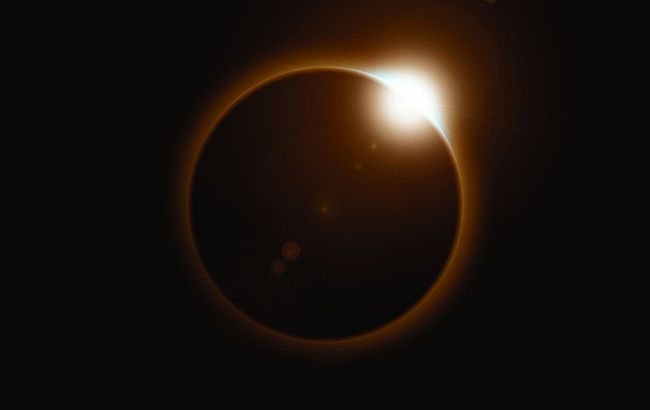Rare 6-minute total solar eclipse: Who will see celestial event of century and when
 When Ukrainians will be able to see a unique solar eclipse (photo: Getty Images)
When Ukrainians will be able to see a unique solar eclipse (photo: Getty Images)
Humanity is about to witness an unforgettable celestial spectacle on August 2, 2027, the world will experience one of the most breathtaking astronomical events of recent times: a total solar eclipse lasting an incredible 6 minutes. This event, already dubbed "The Great North African Eclipse" and considered the eclipse of the century, is expected to captivate millions of viewers across Southern Europe, North Africa, and parts of the Middle East. What is known about this solar eclipse and how it can be observed is reported by Daily Galaxy.
Although the eclipse will not be visible in North America (except for a brief partial eclipse in Newfoundland, Canada), the path of totality promises a uniquely awe-inspiring experience for viewers.
Path of the 2027 total solar eclipse
A total solar eclipse occurs when the Moon passes directly between the Earth and the Sun, completely covering the Sun for viewers along a narrow path of totality.
The path of the upcoming eclipse on August 2, 2027, will extend across several regions from the Atlantic Ocean to parts of Europe, Africa, and the Middle East.
It starts over the North Atlantic
The eclipse will begin in the North Atlantic and will first reach land in southern Spain, particularly the Costa de la Luz (Coast of Light) in the Andalusia region.
From there, the eclipse will continue toward Gibraltar, a British overseas territory, before moving south toward North Africa.
The eclipse over North Africa and the Middle East
Heading south from Spain, the path will cross countries such as Morocco, Algeria, Tunisia, Libya, and Egypt. Egypt will experience the longest period of total darkness, an astonishing 6 minutes and 22 seconds of totality in some areas. This will occur in cities like Luxor and Berenice, which are ideal spots to watch the eclipse.
The eclipse will then move across the Middle East, passing through Saudi Arabia, Yemen, and some parts of East Africa before concluding its journey over the Chagos Archipelago in the Indian Ocean.
The eclipse will affect approximately 89 million people, offering them a rare chance to witness a total solar eclipse.
Choosing the best places to watch
Choosing the right location to observe the total solar eclipse of 2027 is crucial for maximizing the experience.
The path crosses several countries, each offering unique opportunities depending on weather conditions and the duration of totality. Here are some of the best options:
Luxor, Egypt, is the top choice. For many eclipse enthusiasts, Luxor, Egypt, will be the best destination.
With a full duration of 6 minutes and 20 seconds, Luxor is the optimal land-based location to view the longest total eclipse between 2009 and 2114.
Additionally, Luxor is home to some of the world's most famous ancient monuments, like the Valley of the Kings, Karnak Temple, and Luxor Temple, which offer both cultural and astronomical experiences.
Tunisia is a colder alternative. For those who want to avoid the intense heat of Egypt, Tunisia offers a more moderate climate while still providing a long eclipse duration.
For example, in Sfax, the total eclipse will last 5 minutes and 41 seconds. It is one of the best alternatives to Egypt, and there is no summer heat and desert dust.
Spain and Gibraltar is a European view. If you're in Europe, there are great options for viewing the eclipse. Southern Spain, especially Tarifa and Cádiz, will offer totality lasting up to 4 minutes and 39 seconds.
Gibraltar will also provide a stunning observation point as the eclipse first touches land, though with a shorter duration.
Ukrainians will also be able to observe this event, but only as a partial solar eclipse.
Why will the eclipse last so long?
One of the most fascinating aspects of the 2027 total solar eclipse is its exceptional duration. Totality will last up to 6 minutes and 22 seconds, making it the longest total solar eclipse to occur on land between 2009 and 2114. But why will it last so long?
The duration of a total solar eclipse depends on the Moon's elliptical orbit and its distance from Earth.
When the Moon is closest to Earth, its shadow covers a larger area, resulting in a longer eclipse.
The 2027 eclipse will also occur near the equator, where the Moon's shadow covers a broader surface area. The combination of these factors makes this eclipse one of the longest and most spectacular to observe.
Tips for safe viewing
Watching a solar eclipse can be an exciting experience, but safety must be the top priority when observing this celestial event.
Never look directly at the Sun without proper eye protection, as it can cause permanent damage.
Use eclipse glasses that meet the ISO 12312-2 standard, or use a solar viewing device or pinhole projector for safe observation.
Earlier, we wrote about the longest lunar eclipse in recent years and why it was called the "Blood Moon."

